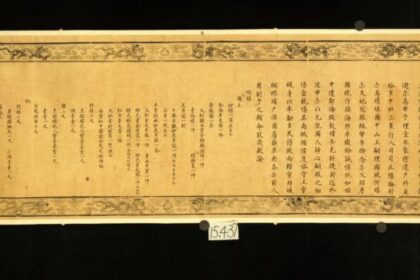A new race for sovereign AI in Korea
South Korea has shifted from ambition to execution in artificial intelligence. Five industry consortia led by LG AI Research, Naver Cloud, SK Telecom, Upstage, and NC AI have been selected by the Ministry of Science and ICT (MSIT) for a national project to build an independent AI foundation model. The goal is explicit, deliver a homegrown model that reaches at least 95 percent of the performance of leading systems such as ChatGPT while running on local infrastructure and reflecting Korean language and culture.
- A new race for sovereign AI in Korea
- Who is building Korea’s next foundation models?
- Benchmarks, efficiency, and the culture test
- Why language and tokenization matter for Korean
- From cloud to chips, building a full stack ecosystem
- Use cases in medicine, telecom, and daily life
- Politics, policy, and debate inside Korea
- Highlights
The project design signals scale and staying power. The five teams were chosen from 15 applicants and bring together companies, universities, research institutes, and government bodies. Each team will receive processed datasets valued at 10 billion won and high quality broadcast video and training data valued at 20 billion won, as well as direct funding for custom datasets worth 2.8 billion won. SK Telecom and Naver Cloud plan to provide leased GPU infrastructure starting in late 2025 through mid 2026 to support training for several teams. The government will evaluate progress periodically, reducing five teams to four in December, then to two by 2027.
The push reflects a broader national strategy. The administration has framed sovereign AI as autonomy across the full value chain, from chips and cloud to models and services. It responds to a world where AI leadership is concentrated in the United States and China, and where data security, language accuracy, and cultural nuance are critical for public services and local industry. Policymakers argue that Korea can chart its own path given strengths in semiconductors, telecom networks, and applied AI, while encouraging open source adoption so businesses across the economy can build on domestic tools.
Cost and language are powerful motivations. Many widely used models are optimized for English tokenization and training data. Korean and other non Latin languages often require more tokens to express the same content, which increases inference costs for customers. One analysis cited by Naver’s HyperClova team estimates the cost burden of processing Korean to be 347 percent higher than processing English for some English centric models. Cultural gaps also show up in bizarre ways. Popular chatbots have stumbled on Korean specific history and humor, including well known memes, which undercuts user trust. A national model tuned to Korean data and usage can address both the cost gap and the cultural fit.
Who is building Korea’s next foundation models?
Across the selected teams and a handful of outside contenders, Korean companies are prioritizing models that work well for Korean language tasks, run efficiently, and integrate cleanly into real services. The emphasis is shifting from sheer parameter counts to practical utility, with variants that target telecom, enterprise, gaming, law, finance, healthcare, and education.
LG AI Research, Exaone 4.0 focuses on reasoning and vision
LG’s Exaone 4.0 is positioned as a hybrid model that combines strong reasoning with visual understanding. The company offers both high performance and lightweight versions to fit different deployment needs. Exaone 4.0 has posted competitive scores on global indexes and appears on widely watched leaderboards near top tier systems. An expert variant with roughly 32 billion parameters was credited with passing several Korean national qualification exams, a sign that the training regime has moved beyond casual chat into specialist tasks.
LG’s approach is enterprise friendly. The team highlights document understanding, coding assistance, and visual analysis for industry settings. LG also collaborates with domestic chip designers, a link that surfaced when FuriosaAI’s RNGD accelerator was adopted to run an earlier Exaone release with strong performance per watt.
SK Telecom, AX series built for Korean and telecom services
SK Telecom’s AX family targets Korean language, efficiency, and rapid integration into telecom products. The AX 3.1 Lite model, trained from scratch on about 1.65 trillion multilingual tokens with a heavy Korean focus, has 7 billion parameters and is available as open source for mobile and on device use. Company benchmarks report about 96 percent performance on the KMMLU2 reasoning test for Korean and 102 percent relative performance on the cultural understanding benchmark CLIcK3 compared with larger models.
AX models are already being threaded into SK Telecom’s services. The company has tested call summarization, spam filtering, and assistant features, and is deploying AI secretaries to consumer users. As part of the national project, SK Telecom will also provide GPU capacity to other teams, a sign of the telecom sector’s role in infrastructure as well as applications.
Naver Cloud, HyperClova X and a deep Korean dataset
Naver’s HyperClova line is built on one of the largest Korean language corpora assembled for AI training. The latest family, HyperClova X, is tuned for high accuracy on Korean tasks and expanded with specialized variants. HyperClova X Think, introduced in June 2025, strengthens reasoning and can solve math and science problems that include images. Naver has described plans for a multimodal omnifoundation model that spans text, image, and other media.
Naver frames HyperClova as both a technology pillar and an economic remedy. English first tokenization and pricing tend to inflate costs for Korean users, so Naver argues that a domestic model and toolchain reduce that burden while reflecting Korean history, law, and cultural context more faithfully than global generalists.
Upstage, Solar Pro 2 pursues intelligence per dollar
Upstage, a startup in the sovereign AI race, is focused on efficiency. Solar Pro 2, a model of roughly 31 billion parameters, is the only Korean entry on the Frontier Language Model Intelligence leaderboard run by Artificial Analysis. It ranks near the global top tier for model intelligence and leads the Intelligence versus Cost to Run metric, which evaluates the compute cost required to deliver a given level of capability.
Upstage positions Solar Pro 2 for enterprise deployments across law, finance, and healthcare while maintaining multilingual strengths. The company backs its claims with benchmark scores and highlights that a well trained 30 billion scale model can match or surpass much larger rivals for many tasks when designed with a careful token to parameter balance.
NC AI and Kakao, multimodal strength and consumer reach
NC AI, a subsidiary of NCSoft, has advanced a multimodal family called Varco. Varco and Varco Vision 2.0 can process images and text and have outperformed other open source models on several tests. The focus is media, games, and creative tools, where image understanding matters.
Kakao continues to build out its Kanana models in partnership with OpenAI. The company is weaving AI assistants into messaging and content platforms used daily by tens of millions of Koreans. Kakao was not selected for the current government project but remains a key proof point for consumer scale distribution of AI in Korea.
Other contenders, KT, hospitals, and startups
KT introduced MIDEUM 2.0, an 11.5 billion parameter open source model with plans for a Pro version that strengthens reasoning. In medicine, Seoul National University Hospital trained a Korean clinical model on tens of millions of records and reported an 86.2 percent score on the Korean Medical Licensing Examination, higher than the human average in a comparative study. In mathematics, a collaboration between Mathpresso and Upstage produced MATH GPT, a 13 billion parameter model that beat GPT 4 on one benchmark with an accuracy of 0.488 versus 0.425 while using far less compute.
Benchmarks, efficiency, and the culture test
Benchmarks have become the scoreboard for AI. They cover general knowledge, coding, math, and reasoning. Common suites include MMLU, HumanEval, LiveCodeBench, AIME, and MATH 500, with newer tests such as MMLU Pro and Humanity’s Last Exam raising the level of difficulty. Platforms like Hugging Face and Artificial Analysis aggregate results into leaderboards that shape reputations and influence buying decisions.
Korean models are now a fixture on these lists. LG’s Exaone 4.0 has appeared within striking distance of global leaders. Upstage’s Solar Pro 2 is recognized as a frontier model and ranks first on Intelligence versus Cost to Run. That particular metric matters in a country where GPU supply is tight and enterprises need to watch spending on cloud inference. These placements strengthen the case that domestic models can compete on quality and price.
Benchmarks are only part of the story. Engineers rely on them to guide training, but real users judge models on reliability, tone, and fit to task. Even leading frontier models that top academic tests have faced user criticism for bland conversation and basic mistakes. Korea’s sovereign AI experiment will be judged not only on leaderboard positions but also on whether models power services that people choose to use every day in Korean.
Why language and tokenization matter for Korean
Large language models break text into tokens, then learn patterns over those tokens. Many Western models use tokenization schemes that fit English well. A single English word may map to a single token, which keeps sequence lengths short and reduces cost. Korean and other non Latin languages are often represented at the byte level or with subword units that expand the number of tokens per sentence. Longer sequences drive higher compute usage and higher bills for customers and developers.
This is not abstract. A study referenced by Naver’s team suggests that processing Korean on English centric models can cost more than three times as much as processing English. A national model trained with a tokenizer designed for Korean, along with a training set that reflects Korean usage, can improve both speed and accuracy. Culturally aware training matters too. Global chatbots have generated confident but wrong answers about Korean history and public figures. A model that has read and aligned to Korean sources is less likely to wander into such mistakes.
From cloud to chips, building a full stack ecosystem
Sovereign AI is more than a model. Korea is assembling the surrounding infrastructure. As part of the national program, teams will receive curated datasets and video training material valued in the tens of billions of won. SK Telecom and Naver Cloud plan to lease GPU capacity to support model training from late 2025 through mid 2026. The government will review progress every six months, winnowing the field to two teams that continue through 2027.
Hardware is a major lever. Korean startups are commercializing neural processing units, or NPUs, as efficient engines for inference. SK Telecom has begun replacing Nvidia GPU servers with Rebellions’ ATOM NPU for X Caliber, a veterinary X ray analysis service used by more than 1,000 hospitals nationwide. The system detects 45 categories of findings, including breed related markers, and returns results in roughly 15 seconds with accuracy reported as high as 97 percent. SK Telecom built a production cluster of six servers, each with 48 NPUs, and is also piloting NPUs for assistant features in its consumer services.
FuriosaAI’s second generation RNGD chip has been integrated with LG’s Exaone 3.5 for inference and received approval for commercialization after extensive evaluation. The company also announced its first overseas customer in the United States, an early sign that Korea’s AI chip ecosystem can export as well as support domestic deployments. NPUs bring lower power consumption and cost for repetitive inference tasks in healthcare, education, and telecom. GPUs remain essential for general purpose training and a wide range of inference, so Korea’s hardware stack is likely to be a mix of both. Telecom operators are pairing data center deployments with edge compute for low latency services in line with national projects to upgrade AI infrastructure across the country.
Use cases in medicine, telecom, and daily life
The sovereign AI effort is already visible in real services. In healthcare, X Caliber’s move to domestic chips shows that Korean infrastructure can meet production requirements at scale. Hospital researchers have trained Korean medical models that reach near expert performance on licensing exams, and the regulator has issued guidance for approving text generation systems in clinical settings. That guidance, announced early in 2025, gives hospitals and vendors a path to validate new tools safely.
Telecom carriers are weaving LLMs into consumer apps and contact centers. SK Telecom’s assistants can summarize calls, flag unwanted traffic, and help recommend plans. Naver is improving search, shopping, and customer support with HyperClova variants that better understand Korean phrasing and cultural context. Kakao is rolling out AI agents across messaging and content, where integration and ease of use can matter more than a model’s size. Several labs are also releasing small models for on device use, a path that reduces latency and protects privacy for simple tasks.
Specialized models are making headway. Legal and financial firms want models that quote statutes correctly and draft documents with domain knowledge. Startups and universities are targeting these niches. In math, compact reasoning models now compete with far larger systems on test suites, and they do so with a fraction of the compute. The common thread is efficient design and careful data selection rather than chasing the largest possible parameter count.
Politics, policy, and debate inside Korea
Sovereign AI has become a political and strategic priority. The government has spoken of a 100 trillion won investment plan over several years and has appointed industry leaders to senior roles, including an AI senior presidential secretary with a background in Naver’s research organization. Two flagship programs stand out, the Independent AI Foundation Model project now underway, and a National AI Computing Center that aims to pool and allocate compute capacity for research and industry. The former has attracted strong private participation. The latter has had a slower start, a reminder that infrastructure consortia are complex to build.
The strategy is not without critics. Startup founders worry that funding and attention will flow mainly to large conglomerates. Some argue that Korea should focus on specialized applications where it can win quickly rather than racing head to head with global titans on foundation models. Supporters respond that domestic models are essential for data protection, sector specific compliance, and cultural fit, and that open source licensing can spread the benefits widely across the economy.
There is also a diplomatic dimension. Korea’s leaders present sovereign AI as compatible with international cooperation. Opinion leaders have called for a collaborative version of sovereignty that keeps systems under national control while aligning with global norms on safety and transparency. Korea’s strength in semiconductors positions the country to serve partners that want local control of AI without cutting ties to global trade. The outcome of this experiment will shape how other middle powers think about autonomy in AI.
Highlights
- MSIT selected five consortia led by LG, Naver Cloud, SK Telecom, Upstage, and NC AI to build a national foundation model with a 95 percent performance target versus frontier systems.
- Government support includes curated datasets, video training material, and funding for custom data, plus leased GPU infrastructure from late 2025 to mid 2026.
- LG’s Exaone 4.0 and Upstage’s Solar Pro 2 appear on global leaderboards, with Solar Pro 2 topping Intelligence versus Cost to Run on Artificial Analysis.
- SK Telecom’s AX 3.1 Lite delivers strong Korean scores and is available as open source for mobile and on device use; Naver’s HyperClova X Think strengthens reasoning and multimodal skills.
- NC AI’s Varco models and Kakao’s Kanana lineup expand multimodal and consumer applications across games, media, and messaging.
- KT’s MIDEUM 2.0 and domain models from hospitals and startups show momentum in healthcare and specialized reasoning.
- Domestic NPUs from Rebellions and FuriosaAI entered commercial service, reducing power and cost for inference while GPUs continue to anchor training.
- Korean language tokenization and cultural tuning reduce costs and errors that arise with English centric systems, a key driver behind sovereign AI.
- Debate continues over whether national champions or nimble specialists should lead, as Korea balances autonomy with open markets and global cooperation.












